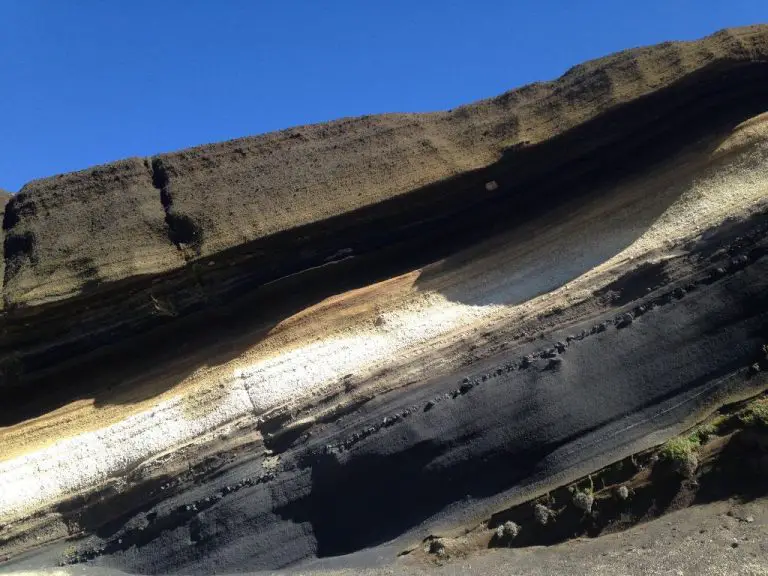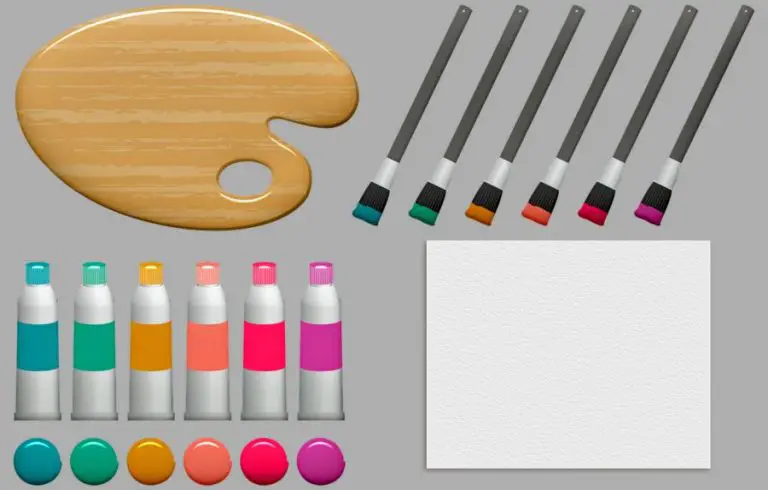How Do You Get Clay In Ragnarok Ark?
Clay is an important resource in the popular dinosaur survival game Ark: Survival Evolved. The free Ragnarok map provides a massive new land with diverse biomes to explore and harvest resources. Clay is one of the key materials that can be gathered on this expansive map.
This guide will cover where to find and harvest clay deposits throughout the Ragnarok terrain. We’ll identify the best clay farming locations and techniques using dino companions or tools. Whether you need clay for crafting, building, or trading, this content will help Ark survivors locate reliable clay sources and make the most of this useful resource on the Ragnarok map.
Clay Deposits
Clay is an important resource in Ark Survival Evolved that can be gathered and used for crafting various items. Clay deposits are generally found near water sources such as beaches, rivers, and ponds. The clay will spawn as rock-like nodes that can be mined by dinosaurs or tools to obtain clay as a resource.
Some of the best places to find clay deposits include:
- Along beaches and shorelines – Look for clay rocks spawning near the water’s edge.
- Near bodies of fresh water – Check along riverbanks and around ponds.
- Coastal regions – The shorelines around the island tend to have more clay deposits.
- Swamp biomes – Search the muddy areas and shallow water.
- Underwater – Use an aquatic creature to harvest clay beneath the water’s surface.
Clay deposits come in different sizes with larger nodes providing more clay. Using a dinosaur or tool with high gathering damage can yield more resources from each node as well. Targeting these clay rock formations is the only natural way to obtain clay in Ark.
Beaches
One of the easiest places to find clay deposits in ARK: Survival Evolved is along beaches. Look for light gray patches in the sand near the waterline. Using a Metal Pick or other harvesting tool, you can gather a good amount of clay from beach deposits. Focus your gathering efforts on beaches near the green obelisk location, as this area tends to have more clay deposits. It’s also relatively safe from dangerous dinos. With some time and effort, you can stock up on clay along the beaches before heading back to base.
Underwater
One of the best places to find clay deposits in ARK: Survival Evolved is underwater. Large clay deposits can be found scattered along the ocean floor in most parts of the map. The deposits stand out as large, smooth, light-colored rock formations against the darker ocean ground.
To mine these underwater deposits, you’ll need to take an aquatic creature down with you. Argentavis, Pelagornis, and Tapejara can all be effective for gathering clay underwater when set to attack the deposits. You’ll also want to equip yourself and your creature with scuba gear so you can stay underwater longer while mining.
A Megalodon or Basilosaurus can also be good choices for quickly harvesting large amounts of clay from the seabed deposits. Just be wary of oxygen levels when diving deep underwater. Having oxygen stat boosts on your character and creature can help substantially. With the right creature and gear, you can amass clay reserves quickly from the ocean.
The Great Trench
The Great Trench in Ragnarok is one of the best places to farm large quantities of clay. This expansive underwater area contains an abundance of clay deposits along the sea floor and walls. With the help of an aquatic mount like a Megalodon or Basilosaurus, you can easily harvest thousands of clay in a short amount of time.
The key advantage of mining clay in the Great Trench is the sheer density of nodes available. Rather than having to search around for sporadic nodes on beaches or in shallow water, the sea floor here is littered with clay. Just by riding along the bottom of the trench, your creature will auto-harvest clay faster than you can store it.
Having an oxygen stat of 400+ is recommended before farming here, as you’ll be underwater for an extended period. Bring extra scuba gear if needed. A Basilosaurus makes the ideal farming creature since it doesn’t require oxygen. Set up a nearby water base with storage containers so you can quickly unload your clay haul from each run.
Farming Clay
One of the most efficient ways to farm large amounts of clay is to use a dino that specializes in gathering resources. Good options include:
- Ankylosaurus – This dino is great for farming clay because of its high gathering rates and weight carry capacity. Put some points into melee damage and weight.
- Doedicurus – Another top pick, the Doedicurus gathers clay very quickly with its tail spike. Level up melee damage and weight.
- Mammoth – While not as efficient as the Ankylo or Doedicurus, Mammoths can still quickly gather large clay deposits with their powerful tusks. Improve melee damage and weight.
Bring these dinos to clay-rich areas like beaches, underwater deposits, or the Great Trench. Use their gathering attack on clay rocks and claystone boulders to quickly stock up on clay. Transfer the clay to your dino’s inventory and haul it back to base to be processed and stored. With a high melee damage dino specialized in resource harvesting, you can easily mass produce clay to make cementing paste, adobe structures, and other clay items.
Dinos for Gathering
Harvesting clay in ARK can be time consuming and dangerous if done manually. Using dinos to gather clay is much more efficient. Here are some of the best dinosaurs to use for clay harvesting:
Ankylosaurus – This armored dinosaur is excellent for gathering all types of resources, including clay. Use its tail smash attack near clay deposits for massive amounts of clay.
Doedicurus – Another heavily armored dino ideal for clay harvesting. Doedicurus gathers clay very quickly with its rolling attack.
Castoroides – While not as efficient as Ankylos or Doedics, the giant beaver can still gather sizable amounts of clay with its bite attack.
Mammoth – A solid choice, especially if already using one for wood gathering. The Mammoth harvests clay at a decent rate.
Procoptodon – Their hopping attack can yield reasonable clay amounts. Kangaroos also have weight-reducing pouches to carry more.
Therizinosaurus – This unusual herbivore gathers clay efficiently. It has high carry weight to transport large clay hauls.
Using the right creature can make obtaining clay much faster and safer. Target clay deposits with dinosaurs using their gathering attack for best results.
Clay Uses
Clay is incredibly useful in Ark for crafting and building. Here are some of the key uses for clay:
Adobe structures – Clay is a key ingredient needed to make adobe structures, which are important for insulation and protection from the elements.
Refined ceramics – Clay can be used to craft refined ceramics which are used to make irrigation pipes, electronics, and other high-tech items.
Polymer and electronics – Electronics like wires, outlets, junction boxes require polymer which is made from obsidian and clay. Clay is essential for crafting electronics.
Dyes – Many colorful dyes require clay as an ingredient. Dyes allow you to paint your structures, flags, saddles, and more.
Pottery – Clay can be used at the pottery table to craft useful pottery like jugs, jars, vases, and plumbing items.
Crafting cementing paste – An essential resource, cementing paste requires clay in addition to chitin or keratin. It’s used for structures, crafting, and taming creatures.
Fertilizer – Compost bins require clay and thatch to craft fertilizer which helps nearby crops grow faster.
Kick-starting metal processing – Clay is used when making the refining forge which unlocks the ability to process metal into ingots.
Unlocking new engrams – Many engrams require some amount of clay to unlock before they can be crafted.
As you can see, clay has many important uses in Ark for building, crafting, farming, and advancing your capabilities. It’s a versatile resource that becomes essential for mid and end-game progress.
Storing Clay
When you start accumulating large quantities of clay, you’ll want to make sure you store it properly for future use. Here are some tips for storing clay long-term:
Build storage containers – Dedicated storage boxes, vaults or other containers are useful for holding clay safely. Metal boxes or vaults are ideal as they are resistant to damage. Place them somewhere secure like a base or enclosure.
Organize by type – Store different clay types separately so you can easily find the one you need. Label each container so you know what’s inside.
Limit moisture exposure – Keep storage containers closed and place them somewhere dry to prevent clay from getting wet and ruining. Consider putting them on foundations or ceilings if you’re in a flood prone area.
Watch for pests – Some creatures may try to eat your clay if accessible. Make sure storage is secured and enclosed to avoid this.
Take only what you need – Don’t leave clay sitting out once you’ve taken some. Only remove the amount immediately required to avoid waste.
Check stocks routinely – Every so often, check your clay stocks and refresh or replace any that is close to expiring.
With proper storage methods, you can amass a nice clay stockpile to use for crafting, building and more down the line.
Summary
In summary, there are a few main ways to obtain clay in Ark: Survival Evolved on the Ragnarok map.
Clay can be found along beaches scattered across the map. Look for clay rock deposits while exploring coastal areas. Clay also spawns underwater, especially in the depths of the Great Trench. Take an aquatic creature like a Megalodon to safely reach clay at the bottom of the ocean.
You can also farm clay by placing a Tapajara on wandering mode over clay deposits. The Tapajara will harvest clay as it flies around. Ankylosaurus, Doedicurus, and Castoroides are other good creature options for gathering clay efficiently.
Once obtained, clay can be used for crafting adobe structures, fabricating electronics, and more. Be sure to store it in a safe place like a storage box so you don’t lose your clay supply.
With the right tools, some exploration, and a bit of creativity, collecting clay on Ragnarok doesn’t have to be difficult!



